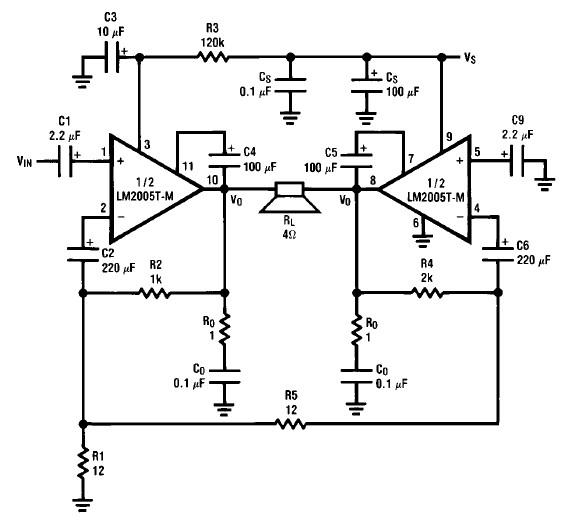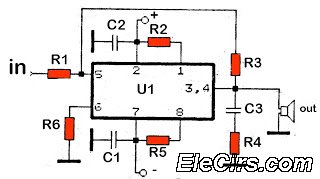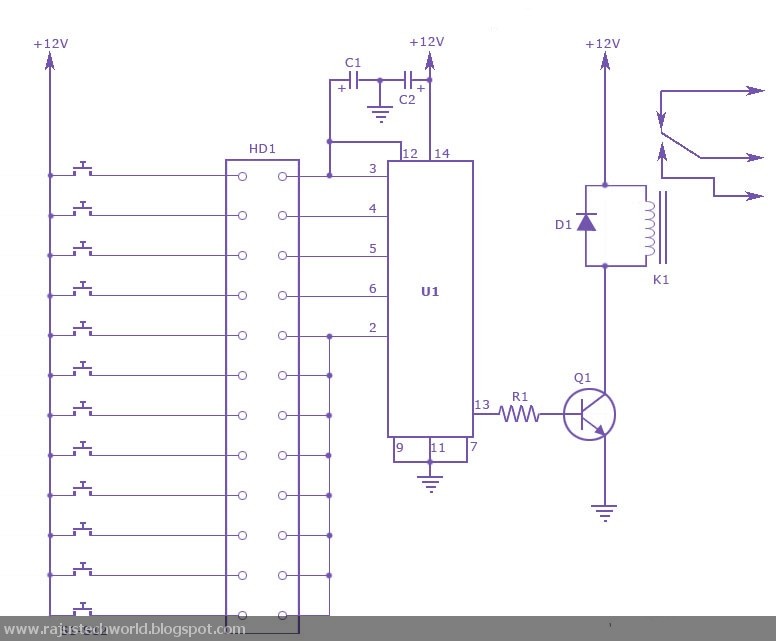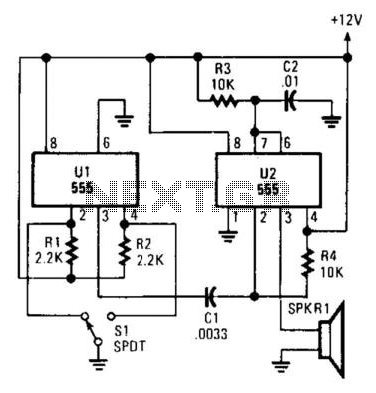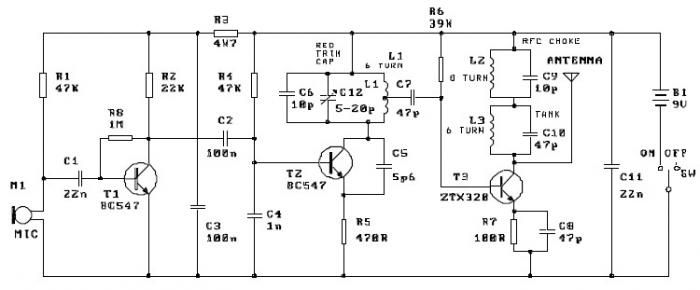
Electronic Metronome Generates Mechanical Sound
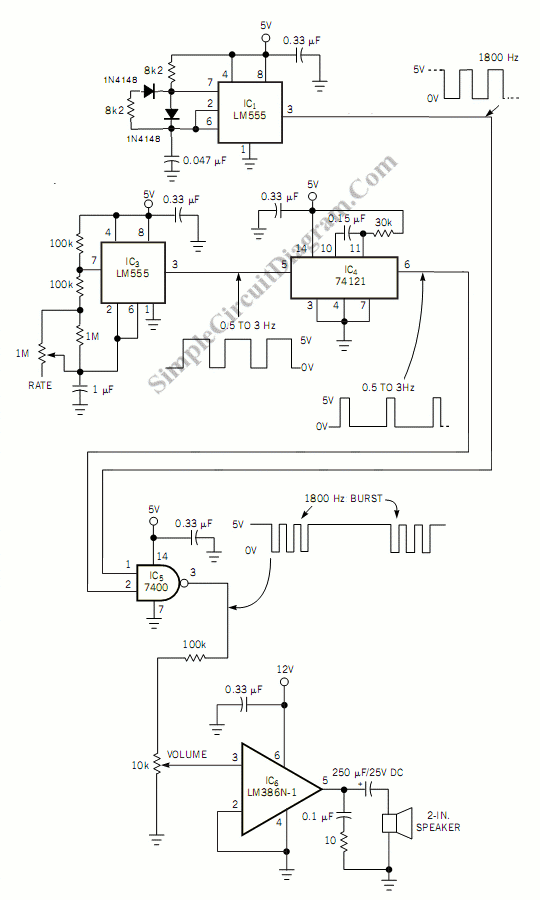
This is a metronome circuit that produces a mechanical sound characteristic. A metronome with a mechanical sound character enhances the enjoyment of musical practice and performance.
The metronome circuit is designed to generate a rhythmic sound that aids musicians in maintaining a consistent tempo during practice sessions. The mechanical sound characteristic typically results from the use of a mechanical oscillator or a solenoid that strikes a resonating surface, producing a distinct auditory cue.
The circuit may include a timer IC, such as the 555 timer, configured in astable mode to produce a square wave output. This output drives a transistor or a relay, which in turn activates a solenoid or a small hammer mechanism. The mechanical striking action creates a sound that is more engaging than electronic beeps or tones.
Additional components may include a variable resistor to adjust the tempo, a capacitor to stabilize the timing, and a power supply circuit, which could be a battery or an AC adapter, ensuring that the metronome operates reliably. The design may also feature an LED indicator that blinks in sync with the metronome's beat, providing a visual cue for users.
The overall layout of the circuit should be compact, allowing for portability, especially if housed in a small enclosure. The choice of materials for the resonating surface is crucial, as it influences the quality and volume of the sound produced. Common materials include wood or metal, which can enhance the acoustic properties of the metronome.
In summary, this metronome circuit combines electronic components with mechanical elements to produce a traditional sound that is both appealing and functional for musicians seeking to improve their timing and rhythm skills.This is a metronome circuit that has mechanical sound character. The metronome that has mechanical sound character will make our life more fun and it would be.. 🔗 External reference
The metronome circuit is designed to generate a rhythmic sound that aids musicians in maintaining a consistent tempo during practice sessions. The mechanical sound characteristic typically results from the use of a mechanical oscillator or a solenoid that strikes a resonating surface, producing a distinct auditory cue.
The circuit may include a timer IC, such as the 555 timer, configured in astable mode to produce a square wave output. This output drives a transistor or a relay, which in turn activates a solenoid or a small hammer mechanism. The mechanical striking action creates a sound that is more engaging than electronic beeps or tones.
Additional components may include a variable resistor to adjust the tempo, a capacitor to stabilize the timing, and a power supply circuit, which could be a battery or an AC adapter, ensuring that the metronome operates reliably. The design may also feature an LED indicator that blinks in sync with the metronome's beat, providing a visual cue for users.
The overall layout of the circuit should be compact, allowing for portability, especially if housed in a small enclosure. The choice of materials for the resonating surface is crucial, as it influences the quality and volume of the sound produced. Common materials include wood or metal, which can enhance the acoustic properties of the metronome.
In summary, this metronome circuit combines electronic components with mechanical elements to produce a traditional sound that is both appealing and functional for musicians seeking to improve their timing and rhythm skills.This is a metronome circuit that has mechanical sound character. The metronome that has mechanical sound character will make our life more fun and it would be.. 🔗 External reference
